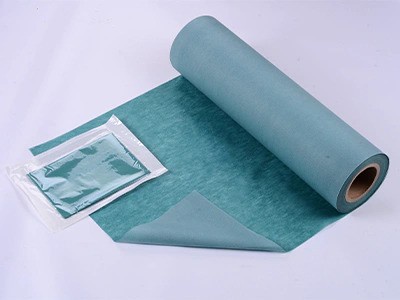Non-woven fabrics are an integral part of our everyday lives, playing a crucial role in various industries from diapers to surgical masks. But how are non-woven fabrics actually made? In this section, we will delve into the intricate process of non-woven fabric production to unveil the art and science behind it.
Raw Material Selection:
The manufacturing of non-woven fabrics begins with the careful selection of raw materials. These materials can range from natural fibers like cotton and wool to synthetic materials such as polyester and nylon. The choice of raw materials is influenced by the intended application and the desired properties of the final fabric.
Web Formation:
The first step in the manufacturing process is web formation. During this stage, the fibers are opened, carded, and randomly laid down to create a loose web-like structure. The subsequent bonding process is crucial to transform this loose structure into a cohesive fabric. Various bonding methods are employed, including thermal bonding, mechanical bonding, and chemical bonding, each chosen based on the desired fabric properties.
Thermal Bonding: Heat is applied to the fiber web, causing the fibers to melt and bond together, resulting in a fabric with high strength and stability.
Mechanical Bonding: Fibers are entangled through mechanical means such as needle punching or hydro-entanglement, producing fabrics with a soft and fluffy texture.
Chemical Bonding: Adhesives or bonding agents are used to join the fibers, enhancing the fabric's performance in specific areas such as water repellency, flame retardancy, or antimicrobial properties.
Finishing Processes:
After bonding, the fabric undergoes various finishing processes to enhance its properties. These processes may include calendering, printing, dyeing, or coating.
Calendering: The fabric passes through heated rollers to improve smoothness, strength, or surface appearance.
Printing and Dyeing: Color or patterns are added to the fabric, enhancing its visual appeal.
Coating: A layer of chemicals is applied to improve performance characteristics such as water resistance or breathability.
Quality Control:
Throughout the non woven fabric manufacturer process, quality control is paramount to ensure non-woven fabrics meet desired specifications. Manufacturers employ physical and chemical testing methods to assess properties such as tensile strength, abrasion resistance, or pore size. Fabrics that fail to meet quality standards are rejected and subject to further processing or disposal.
In conclusion, the manufacturing of non-woven fabrics is a complex and fascinating process that combines the art and science of fiber bonding to create a cohesive fabric. From raw material selection to bonding and finishing processes, each step is carefully executed to produce fabrics with specific properties. Rigorous quality control measures ensure only the highest-quality fabrics reach the market. The next time you encounter a non-woven fabric, you can appreciate the craftsmanship and expertise behind its production.


No comments yet